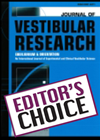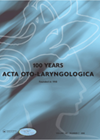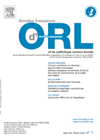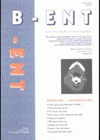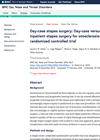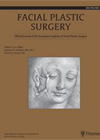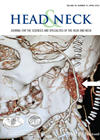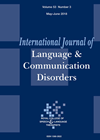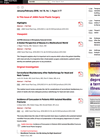
Journal Reviews archive for July 2016
Type 2 diabetes and BPPV
Previous research has shown an association between BPPV and certain medical conditions such as hypertension, hyperlipidaemia and type 1 diabetes. The authors in this retrospective observational study investigated the interaction between BPPV and type 2 diabetes by examining the ‘role...
MRI and the endolymphatic space
This is an interesting study which was performed to evaluate the endolymphatic space in patients with endolymphatic hydrops (EH), using MR imaging. Seven patients aged between 21–77 years; five female, two male with unilateral or bilateral symptoms of EH were...
Which bone conduction implant (BCI) device to use?
Bone conduction implants (BCI) are alternatives when the use and benefit of conventional, prosthetic equipment is limited or contraindicated in patients who suffer from conductive, mixed and single-sided deafness. They are broadly divided into two main groups delivering vibration directly...
Age and the SSCC
This is a radioanatomical study on the CT scans of 385 temporal bones to measure some parameters of the superior semicircular canals (SCCC) including bony thickness, diameter and projection into the middle cranial fossa. All measurements were performed on a...
Learning curve for sialendoscopy
Sialendoscopy represents a minimally invasive technique that permits direct salivary tree visualisation and treatment using endoscopic techniques. Previous studies have shown that it is an efficacious, safe and potentially gland preserving method to treat major salivary gland disease. However, it...
Day care stapes surgery
This paper reports on a proposed unblinded, randomised controlled trial in which the hearing outcomes after inpatient stapes surgery will be compared with those after day case stapes surgery. The study is currently in the recruitment stage and plans to...
Classification and assessment of midfacial fractures; no more Le Fort facial fractures
There is some evidence that severe or complex midfacial or orbital fractures have declined over the last decade. Interestingly there is also evidence of an increase in road traffic accidents but a decrease in facial injuries. This is possibly attributed...
Best timing for post-treatment PET-CT scans in head and neck cancer
Unfortunately we know that the recurrence rate for head and neck cancer can be high, up to 30-50% in some series. These recurrences tend to occur within the first two years following treatment. Optimal surveillance strategies to detect recurrences early...
Literacy and communication skills of young offenders
This article elucidates the perceptions and experiences of young offenders about their own literacy and communication skills. Young offenders (YOs) are usually between the age of 14 and 16. It is estimated that more than 60% of these offenders have...
Impaired music perception in children with specific language impairment
This study compares musical skills of children with typical language development with those of children with specific language impairment. Both groups received a test consisting of a melody and a song identification along with a test battery to assess receptive...
Facial nerve grafting – what’s the wait?
An uninterrupted facial nerve after resection of cerebellopontine angle (CPA) tumour does not always translate into preserved facial animation. Fortunately there is a high probability spontaneous recovery may occur and hence patients are typically observed for 12 months postoperatively. However,...
Association between depression and survival in patients with head and neck cancer
Approximately 40% of patients develop major depressive disorder (MDD) during diagnosis and treatment for head and neck cancer (HNC). Depressive symptoms in these patients have a significant effect on their rehabilitation and survival. Given the small number of studies in...

